Tom's Guide asks: What's the perfect laptop screen size?
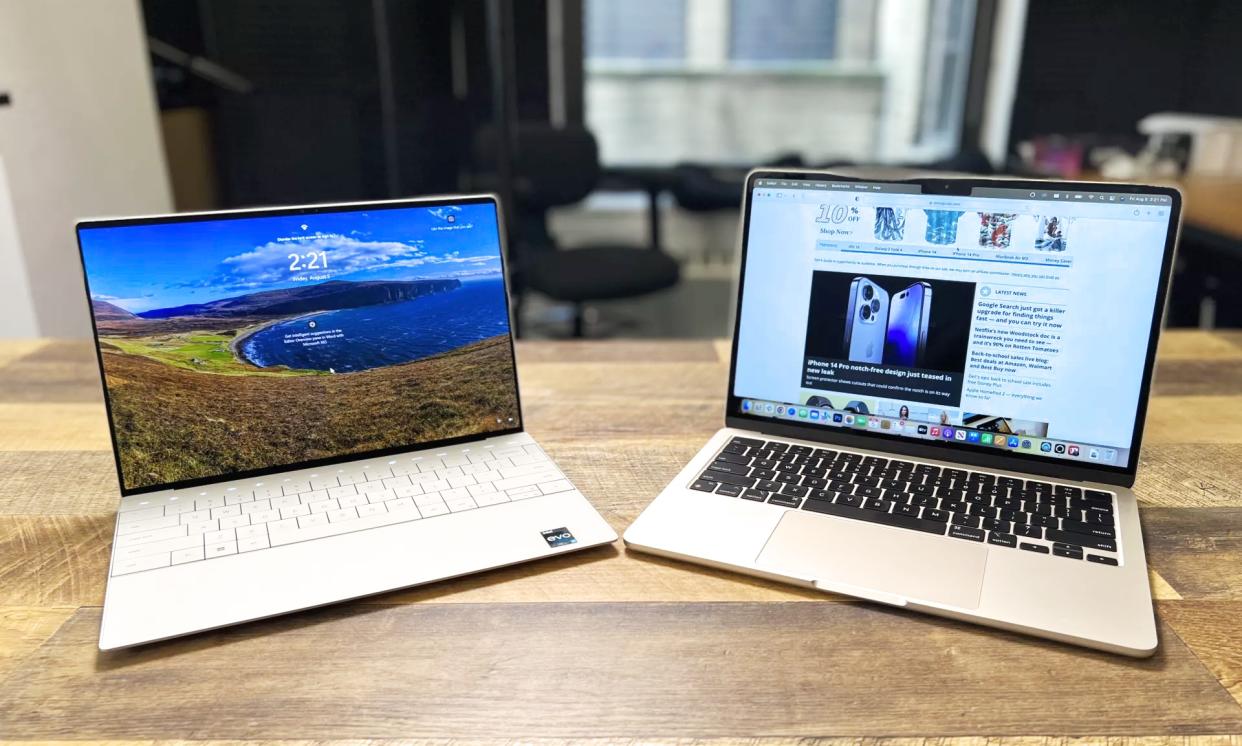
How big of a laptop screen do you really need?
The answer is unique to you, but while there are countless laptops available in a cornucopia of designs you basically have to work within a six-inch spectrum. Gone are the days when 10-inch netbooks (remember those?) seemed like a good idea to PC makers, so these days you're basically limited to laptops with screens 12-18 inches (diagonally) across.
Six inches may not sound like a lot, but there's a world of difference between working on a 13-inch MacBook Air M3 compared to an 18-inch beast like the Alienware m18. The latter is ideal for someone who wants a PC they can work from anywhere on, while the latter is perfect for the person who wants great performance from a Windows PC that's a lot easier to pack up and move than a full desktop.
We asked the members of Tom's Guide computing team — who combined have years of experience testing all manner of laptops — what size screen they preferred, and why.
Every member of our team regularly uses and reviews laptops, and together we have decades of combined experience reviewing MacBooks, Chromebooks and Windows machines. Hopefully their insights help you better understand all the options you have for what size laptop to buy.
Bigger is better
Maybe I'm overthinking this, but that's my job. Here at Tom's Guide we review the latest laptops from major manufacturers in a variety of sizes and designs, so we spend a lot of time thinking about things like, say, what makes the 15.6-inch 1080p AMOLED display on the Samsung Galaxy 4 Pro 360 better or worse than the 15.3-inch 2.8K display on the 15-inch MacBook Air M3.
For some people, not much! But for me, I'll take the slightly larger AMOLED 1080p screen over the Air's (admittedly bright and beautiful) 2.8K IPS panel. And hey, that extra 0.3 inches of screen real estate is great to have.
Personally, I prefer using laptops with screens that are at least 15 inches or bigger, just because it's a lot easier on my eyes and neck since I don't have to hunch forward as much to see the screen. This is why I'll never buy a 4K laptop unless it's a huge 18-inch gaming machine—because it's basically impossible to make out any text or other details on a laptop screen displaying Windows 11 at native 4K resolution. It's actually outright painful on small 13-inch laptops like the Dell XPS 13 Plus, and I can't imagine paying for the privilege unless I planned to have my laptop plugged into a big 4K display much of the time.
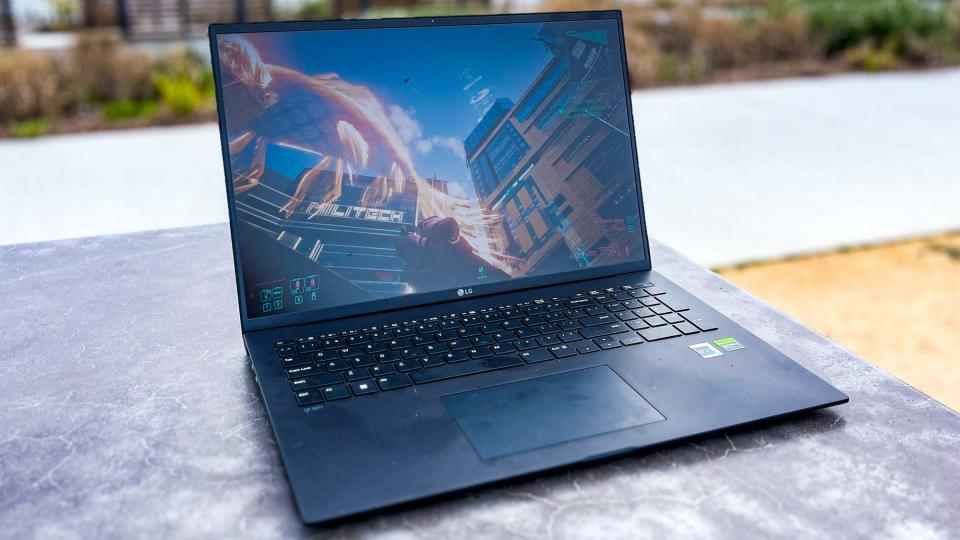
I love the big, beautiful 17-inch screen on the LG Gram 17 Pro not because it looks amazing (it can't compete with the best OLED and mini-LED laptops on the market) but because it's a big canvas that's easy to read and work on.
But my favorite laptop changes pretty regularly as new models come in, and manufacturers continue to surprise me with how much they can pack into this portable PCs. I'm also just one person with questionable opinions on a big team of computing experts, so I thought it might be more interesting and informative to hear what they think.
It's all about the screen size to resolution ratio
When it comes to laptop panels, on-screen resolution compared to screen size is the key factor to me.
It’s why I can jump between playing Elden Ring on one of the best gaming PCs on a 77-inch LG G3 OLED TV in 4K and out-cornering aggressive drivers in Forza Horizon 5 on the Steam Deck OLED’s pin-sharp 7.4-inch, 720p HDR screen without missing a beat. In terms of what your actual eyes can perceive on a 1:1 on-screen pixel count level, that will always be priority numero uno to me.
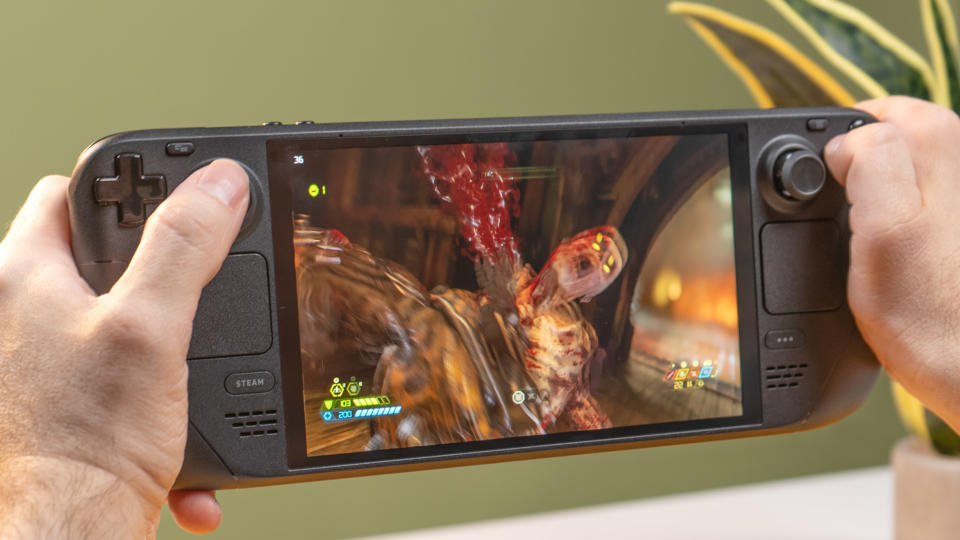
The above ramblings are essentially a prolonged way of saying, for general computing tasks or gaming purposes, I don’t think you need a laptop screen that’s larger than 14 inches.
The subject of what the “ideal” laptop screen size should be is a tricky conundrum for me. My general mantra when it comes to all aspects relating to display tech? Bigger is better, baby! It feels hard to take a sensible stance in these enjoyably collaborative computing conversations we have on a weekly basis here at Tom’s Guide when you’re approaching the debate from the viewpoint of someone who rarely uses a laptop outside of work review purposes, and normally leans upon a trio of OLED displays that clock in at 48, 49 and (gulp) 77 inches respectively to get their job done.
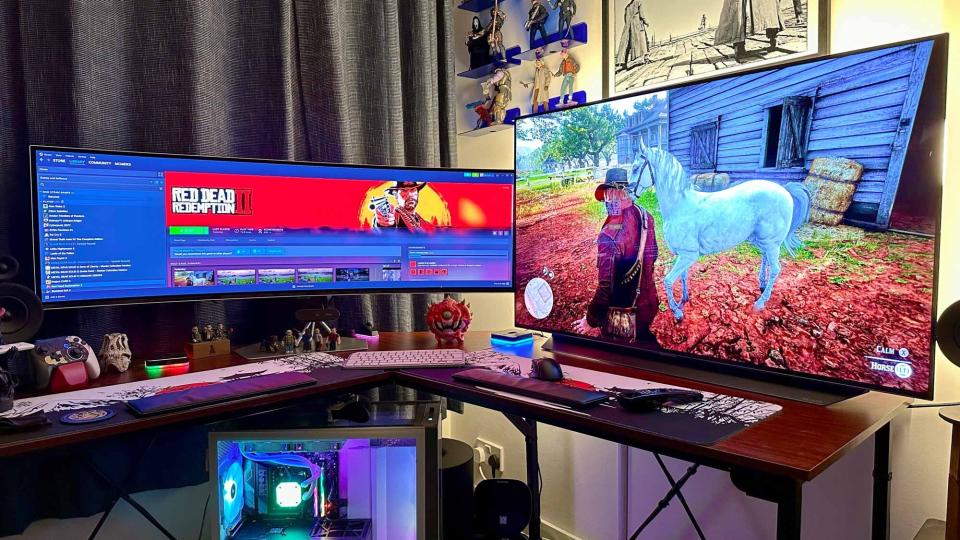
And yet, I think my learned computing colleague Alex Wawro has made a great case for hitting the sweet spot of what an average consumer wants/needs from a laptop display in regards to screen real estate in the past. Like our Oakland-based Senior Editor, I tend to agree that pixel density is king. Having a 4K laptop screen that’s smaller than 18 inches is the textbook definition of “eye-squinting” diminishing returns in my book. That’s why I tend to favor a portable PC display size in the 14-inch range largely due to portability factors and that it's simply too difficult to pick out all that extra Ultra HD detail on laptops that don’t attempt to crush your scrotum when it comes to total dimensions and weight.
My West Coast Stateside compadre has often made the case that anything above 1440p screen resolution (actual count 2560 x 1440) is generally overkill in the laptop space — though generally tweak that latter pixel figure to 1600 considering many of the best laptops operate under strict 16:10 aspect ratio rules.
Portability matters more than visibility
I am a simple soul when it comes to computing requirements. As long as I have an Internet connection and a screen big enough and bright enough to read text, I’m happy.
I often feel like I’m the odd one out when we discuss setups and monitors in the computing team room on Slack as all I use is my laptop — no second screen, not even a separate keyboard and mouse.
I’ve tried different-sized laptop displays, from massive 18-inch screens down to old netbooks with a 7-inch screen that made the iPad look massive.
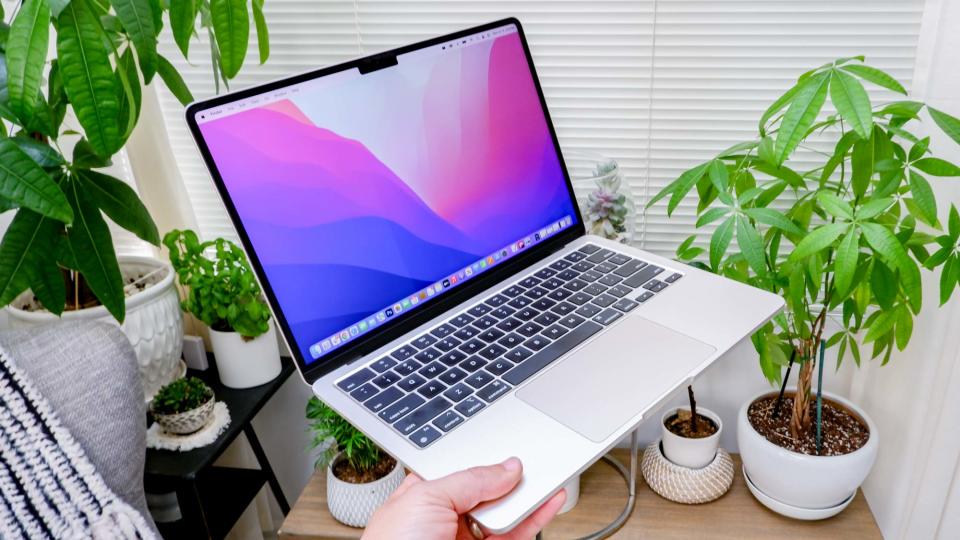
The sweet spot for me is my current MacBook Air M2, and it isn’t so much about the actual size of the 14-inch (well, technically 13.6-inch) screen but the pixel density. I can pack two browser windows side-by-side and still read both comfortably — all in a machine light enough to carry without hurting my back.
Portability matters more to me than visibility. I use the same machine whether in the office, on the train, in my home office or sitting in a coffee shop.
Portability matters more to me than visibility. I use the same machine whether in the office, on the train, in my home office or sitting in a coffee shop.
It needed to be big enough and legible enough to get work done (usually in a Google Docs) or to play games using Nvidia's GeForce Now, while also being small enough to take anywhere. The 14-inch display is that perfect sweet spot for me.
Don’t just take my word for it; I asked Claude 3 (Anthropic’s industry leading AI model) to pick the perfect screen size for a laptop, and it also went for a 14-inch display.
The bigger the display, the bigger the laptop — 15-16 inches is a comfortable sweet spot
Even though I review laptops for a living, I still see them as a secondary option (or necessary evil) when I’m not able to work on a desktop. And even when I do use a laptop at home or work, it’s always connected to one of the best monitors, best mechanical keyboards and best wireless mice.
I feel most comfortable typing on laptops that are either 15 or 16 inches as they typically have large keyboard decks that accommodate my large hands. Of course, that comes with the benefit of a larger display that allows me to read text easier.
I say all that to establish that I’m pretty particular about my work setup. And when I’m traveling for work and have to use a laptop, I’m also particular about what kind of device I want to use.
Keyboard size is more important to me than screen size. However, the former tends to influence the latter. I feel most comfortable typing on laptops that are either 15 or 16 inches as they typically have large keyboard decks that accommodate my large hands. Of course, that comes with the benefit of a larger display that allows me to read text easier. I don’t use glasses (yet), but if I can put less strain on my eyes, the better. Notebooks like the Dell XPS 15 OLED and MacBook Pro 16-inch M3 Max rank among my favorites to use.
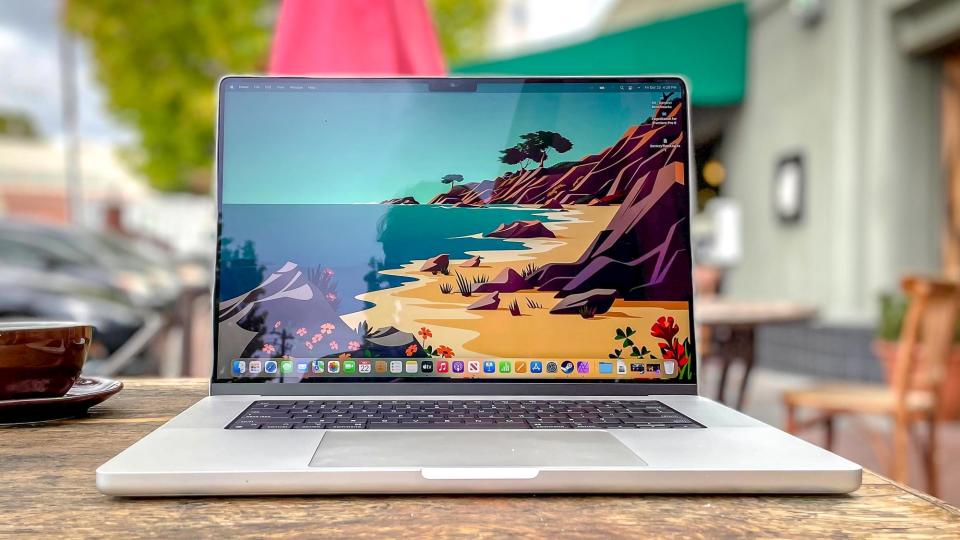
I don’t worry much about resolution since I’m one of those folks who doesn’t think you need 4K on a screen smaller than 18 inches. Anything above standard 1080p works for me since that resolution tends to look blurrier on 15 and 16-inch laptops — though 1080p is perfectly fine for 13-inch laptops to my eyes. The Dell and Apple laptops I mentioned before have the perfect balance of resolution and screen size.
A 15- or 16-inch laptop with 2.5K resolution (or the equivalent) is also great for playing the best PC games. I don’t normally use laptops to play games, but when I’m testing titles for my laptop reviews, it’s good to have a game running on a nice big screen that delivers sharp resolution. Sure, games look better on the best gaming monitors and even on the best OLED TVs, but they don’t look shabby on a 15- or 16-inch laptop display either. Solid color reproduction, OLED and HDR are also important … but I’ll save that discussion for another day.
Using a laptop not connected to a monitor, keyboard or mouse isn’t my preferred way of working. However, when I have no choice but to use a laptop when traveling, I prefer a notebook with a 15- or 16-inch display. This not only ensures I get a large keyboard deck but a display large enough for me to comfortably read and which makes games look their best.
13 inches for travel, 16 inches for home use
When I need to work away from home, my trusty 13-inch laptop hasn’t let me down yet.
I spend more time at my desktop computer each day than I’d like to admit, but there are times when I need to pick up a laptop. Whether I’m traveling for work or just want the added peace of mind of having an actual computer with me when I’m on vacation, you can’t go wrong with the portability of a 13-inch laptop.
The best 13-inch laptops are the perfect size for a backpack and you won’t be weighed down carrying it around with you throughout the day. However, I wouldn’t choose this size laptop to replace my desktop. Instead, I’d opt for a 16-inch laptop as 18-inch laptops are just a bit too big for my liking.

Late last year, I decided to finally get the laptop I always wanted for work: a ThinkPad X13. After countless hours of research and going back and forth, I finally decided on the X13, but the ThinkPad Z16 was on my shortlist for a while. Now that I’m in the process of reviewing the latest version of the Razer Blade 16 though, part of me wonders if I made the right choice.
A 16-inch laptop is better for productivity as its screen is large enough that you can have two windows side by side. However, you will feel the weight — and the bulk — if you go this route.
As I use an ultrawide monitor at home, I don’t think I’ll ever find a laptop that can truly replace my desktop. However, as portable monitors have really come down in price over the past few years, I recently invested in two of them. While one sits underneath my ultrawide monitor as a permanent fixture on my desk, I also have another one that I use for traveling. I brought it to CES with me this year and it really helped ease the transition to working full time on a laptop while I was away.
I know I’m an outlier when it comes to laptops as most people don’t have a giant gaming rig or even a productivity-focused one at home. Still, when I need to work away from home, my trusty 13-inch laptop hasn’t let me down yet.
